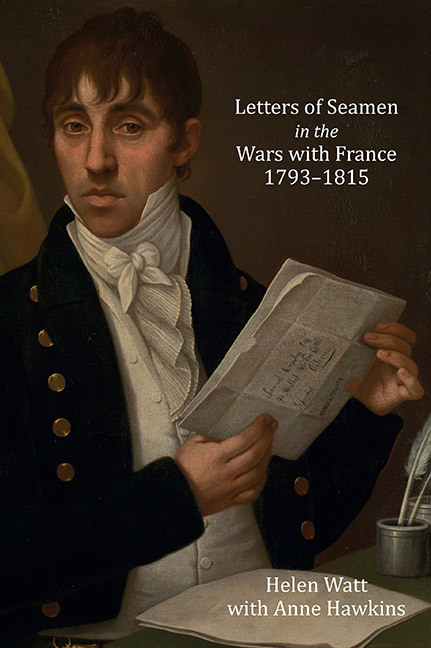Book contents
- Frontmatter
- Dedication
- Contents
- List of Illustrations and Tables
- Foreword
- Preface
- Acknowledgements
- Editorial Conventions
- List of Abbreviations
- Introduction
- Part 1 Thus Dear Father passes the life of a Tar’: Letters of Seamen, 1793–1815
- The Letters A1–194
- Part 2 A great Disturbance among the Fleet’: Letters, Mostly Intercepted, to and from Seamen During the Mutinies in the Royal Navy, 1797
- Letters B1–61
- Conclusion
- Appendix I Biographies
- Appendix II Select Ships Involved in the Mutinies in the Royal Navy, 1797
- Bibliography
- Index
Foreword
Published online by Cambridge University Press: 26 May 2021
- Frontmatter
- Dedication
- Contents
- List of Illustrations and Tables
- Foreword
- Preface
- Acknowledgements
- Editorial Conventions
- List of Abbreviations
- Introduction
- Part 1 Thus Dear Father passes the life of a Tar’: Letters of Seamen, 1793–1815
- The Letters A1–194
- Part 2 A great Disturbance among the Fleet’: Letters, Mostly Intercepted, to and from Seamen During the Mutinies in the Royal Navy, 1797
- Letters B1–61
- Conclusion
- Appendix I Biographies
- Appendix II Select Ships Involved in the Mutinies in the Royal Navy, 1797
- Bibliography
- Index
Summary
This innovative compilation of 255 letters of naval seamen and their addressees creates a cumulative picture of attitudes to contemporary events, wartime life at sea and mutiny from 1793 to 1815. Like Rear-Admiral Thursfield's transcribed letters in Five Naval Journals, 1789–1817, they convey intimate personal reflections not intended for officialdom. To Conrad Gill in The Naval Mutinies of 1797 (p. 121), ‘there is often more of human interest and historical importance in one or two such documents than in a whole sheaf of formal dispatches’. As Gill regretted the destruction of further Nore letters collected by the Admiralty and archived within the Promiscuous Letters of the Public Record Office, the editors are to be congratulated in gathering such ‘information of great interest in regard to the life and opinions of the common seamen’. Similar to Colin White's model of Nelson: The New Letters, they are the outcome of a systematic search of public archives.
This calendar and index of transcribed primary texts was being investigated at the same time as Philip MacDougall and I were preparing The Naval Mutinies of 1797: Unity and Perseverance (2011) for publication. I had been aware of the editors’ research since 2006 and am delighted to write this foreword, which like our volume, presents ‘the seamen on their own terms’. It adds colour to our historical narrative and appeals to a defined but diverse market which seeks primary voices within a well-interpreted context. It is evidence of the community of researchers based at The National Archives, a freemasonry of scholars which communicates data and ideas to enrich each other's academic rigour. Moreover, conferences such as the ‘Nation and the Navy’ at the National Maritime Museum and ‘Naval Ports and Urban Cultures’ at the National Museum of the Royal Navy, Portsmouth, testify to the ongoing diversity of interest in the social history of the Royal Navy of this period, to which this volume manifestly adds.
Part 2 of this volume, like Naval Mutinies of 1797: Unity and Perseverance, developed from the bicentenary focus on the 1797 mutinies and the editors’ own 2007 Mariner's Mirror article, ‘“Now is our Time, The Ship is our Own, Huzza for the Red Flag”: Mutiny on the Inspector, 1797’.
- Type
- Chapter
- Information
- Letters of Seamen in the Wars with France, 1793-1815 , pp. x - xiiPublisher: Boydell & BrewerPrint publication year: 2014

